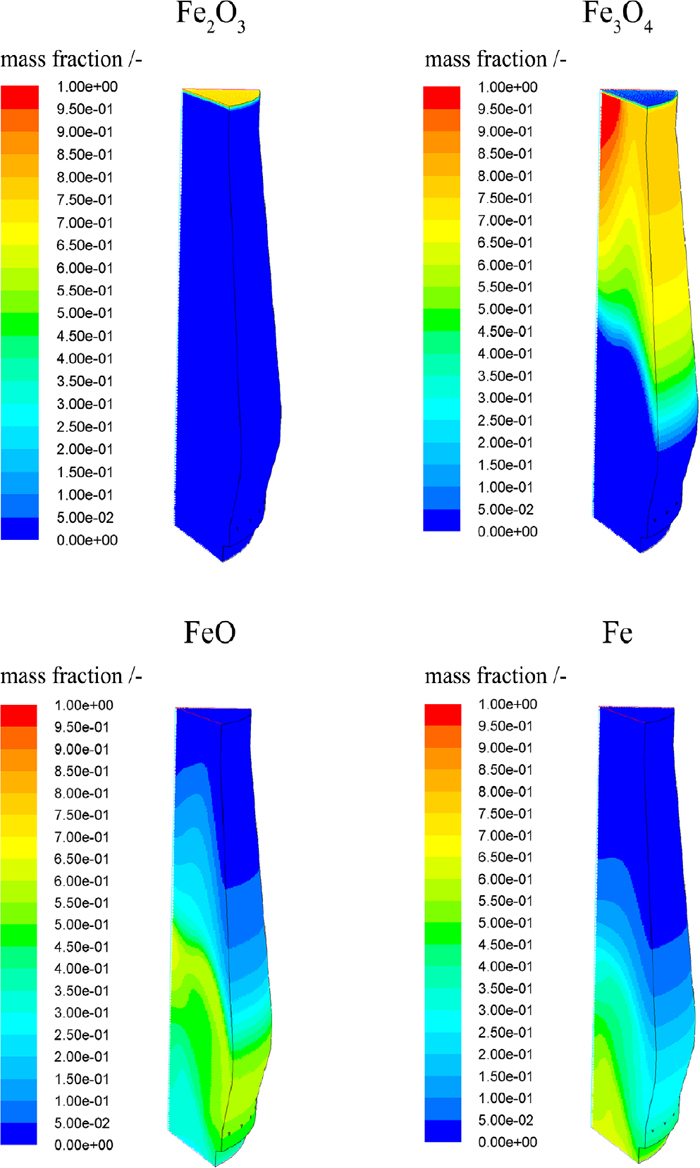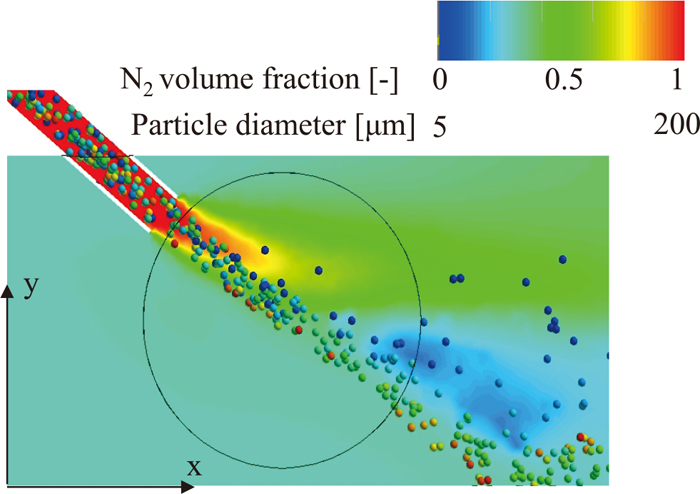Volume 60, Issue 5
Displaying 1-31 of 31 articles from this issue
- |<
- <
- 1
- >
- >|
Publication Data
-
2020 Volume 60 Issue 5 Pages Cover-
Published: May 15, 2020
Released on J-STAGE: May 16, 2020
Download PDF (439K) -
2020 Volume 60 Issue 5 Pages Editorial-
Published: May 15, 2020
Released on J-STAGE: May 16, 2020
Download PDF (524K) -
2020 Volume 60 Issue 5 Pages Contents-
Published: May 15, 2020
Released on J-STAGE: May 16, 2020
Download PDF (149K)
Regular Articles
Fundamentals of High Temperature Processes
-
Article type: Regular Article
2020 Volume 60 Issue 5 Pages 815-822
Published: May 15, 2020
Released on J-STAGE: May 16, 2020
Download PDF (1481K) Full view HTML -
Slag-metal Separation and Reduction Behaviors of Vanadium-bearing Titanomagnetite Metallized PelletsArticle type: Regular Article
2020 Volume 60 Issue 5 Pages 823-831
Published: May 15, 2020
Released on J-STAGE: May 16, 2020
Download PDF (1465K) Full view HTML -
Article type: Regular Article
2020 Volume 60 Issue 5 Pages 832-839
Published: May 15, 2020
Released on J-STAGE: May 16, 2020
Download PDF (1954K) Full view HTML -
Article type: Regular Article
2020 Volume 60 Issue 5 Pages 840-847
Published: May 15, 2020
Released on J-STAGE: May 16, 2020
Advance online publication: January 24, 2020Download PDF (1516K) Full view HTML -
Article type: Regular Article
2020 Volume 60 Issue 5 Pages 848-855
Published: May 15, 2020
Released on J-STAGE: May 16, 2020
Advance online publication: December 26, 2019Download PDF (883K) Full view HTML
Ironmaking
-
Article type: Regular Article
2020 Volume 60 Issue 5 Pages 856-864
Published: May 15, 2020
Released on J-STAGE: May 16, 2020
Advance online publication: December 28, 2019Download PDF (1029K) Full view HTML -
Article type: Regular Article
2020 Volume 60 Issue 5 Pages 865-875
Published: May 15, 2020
Released on J-STAGE: May 16, 2020
Download PDF (3084K) Full view HTML -
Article type: Regular Article
2020 Volume 60 Issue 5 Pages 876-886
Published: May 15, 2020
Released on J-STAGE: May 16, 2020
Download PDF (5412K) Full view HTML -
Article type: Regular Article
2020 Volume 60 Issue 5 Pages 887-897
Published: May 15, 2020
Released on J-STAGE: May 16, 2020
Download PDF (1221K) Full view HTML -
Article type: Regular Article
2020 Volume 60 Issue 5 Pages 898-904
Published: May 15, 2020
Released on J-STAGE: May 16, 2020
Advance online publication: January 17, 2020Download PDF (1097K) Full view HTML -
Article type: Regular Article
2020 Volume 60 Issue 5 Pages 905-914
Published: May 15, 2020
Released on J-STAGE: May 16, 2020
Download PDF (1588K) Full view HTML
Steelmaking
-
Article type: Regular Article
2020 Volume 60 Issue 5 Pages 915-921
Published: May 15, 2020
Released on J-STAGE: May 16, 2020
Advance online publication: December 28, 2019Download PDF (1018K) Full view HTML -
Article type: Regular Article
2020 Volume 60 Issue 5 Pages 922-929
Published: May 15, 2020
Released on J-STAGE: May 16, 2020
Download PDF (1020K) Full view HTML
Casting and Solidification
-
Article type: Regular Article
2020 Volume 60 Issue 5 Pages 930-938
Published: May 15, 2020
Released on J-STAGE: May 16, 2020
Advance online publication: January 10, 2020Download PDF (1835K) Full view HTML
Instrumentation, Control and System Engineering
-
Article type: Regular Article
2020 Volume 60 Issue 5 Pages 939-947
Published: May 15, 2020
Released on J-STAGE: May 16, 2020
Advance online publication: January 18, 2020Download PDF (1835K) Full view HTML -
Article type: Regular Article
2020 Volume 60 Issue 5 Pages 948-953
Published: May 15, 2020
Released on J-STAGE: May 16, 2020
Download PDF (635K) Full view HTML -
Article type: Regular Article
2020 Volume 60 Issue 5 Pages 954-959
Published: May 15, 2020
Released on J-STAGE: May 16, 2020
Advance online publication: January 18, 2020Download PDF (1801K) Full view HTML -
Article type: Regular Article
2020 Volume 60 Issue 5 Pages 960-970
Published: May 15, 2020
Released on J-STAGE: May 16, 2020
Download PDF (3553K) Full view HTML
Chemical and Physical Analysis
-
Article type: Regular Article
2020 Volume 60 Issue 5 Pages 971-978
Published: May 15, 2020
Released on J-STAGE: May 16, 2020
Advance online publication: December 28, 2019Download PDF (1299K) Full view HTML -
Article type: Regular Article
2020 Volume 60 Issue 5 Pages 979-987
Published: May 15, 2020
Released on J-STAGE: May 16, 2020
Advance online publication: December 28, 2019Download PDF (1389K) Full view HTML -
Article type: Regular Article
2020 Volume 60 Issue 5 Pages 988-997
Published: May 15, 2020
Released on J-STAGE: May 16, 2020
Advance online publication: January 09, 2020Download PDF (793K) Full view HTML
Welding and Joining
-
Article type: Regular Article
2020 Volume 60 Issue 5 Pages 998-1005
Published: May 15, 2020
Released on J-STAGE: May 16, 2020
Download PDF (3240K) Full view HTML -
Article type: Regular Article
2020 Volume 60 Issue 5 Pages 1006-1015
Published: May 15, 2020
Released on J-STAGE: May 16, 2020
Advance online publication: January 18, 2020Download PDF (1767K) Full view HTML -
Article type: Regular Article
2020 Volume 60 Issue 5 Pages 1016-1021
Published: May 15, 2020
Released on J-STAGE: May 16, 2020
Download PDF (2240K) Full view HTML
Surface Treatment and Corrosion
-
Article type: Regular Article
2020 Volume 60 Issue 5 Pages 1022-1029
Published: May 15, 2020
Released on J-STAGE: May 16, 2020
Download PDF (1343K) Full view HTML -
Article type: Regular Article
2020 Volume 60 Issue 5 Pages 1030-1039
Published: May 15, 2020
Released on J-STAGE: May 16, 2020
Advance online publication: January 17, 2020Download PDF (1265K) Full view HTML -
Article type: Regular Article
2020 Volume 60 Issue 5 Pages 1040-1051
Published: May 15, 2020
Released on J-STAGE: May 16, 2020
Download PDF (1746K) Full view HTML
Transformations and Microstructures
-
Article type: Regular Article
2020 Volume 60 Issue 5 Pages 1052-1062
Published: May 15, 2020
Released on J-STAGE: May 16, 2020
Download PDF (3344K) Full view HTML
- |<
- <
- 1
- >
- >|








